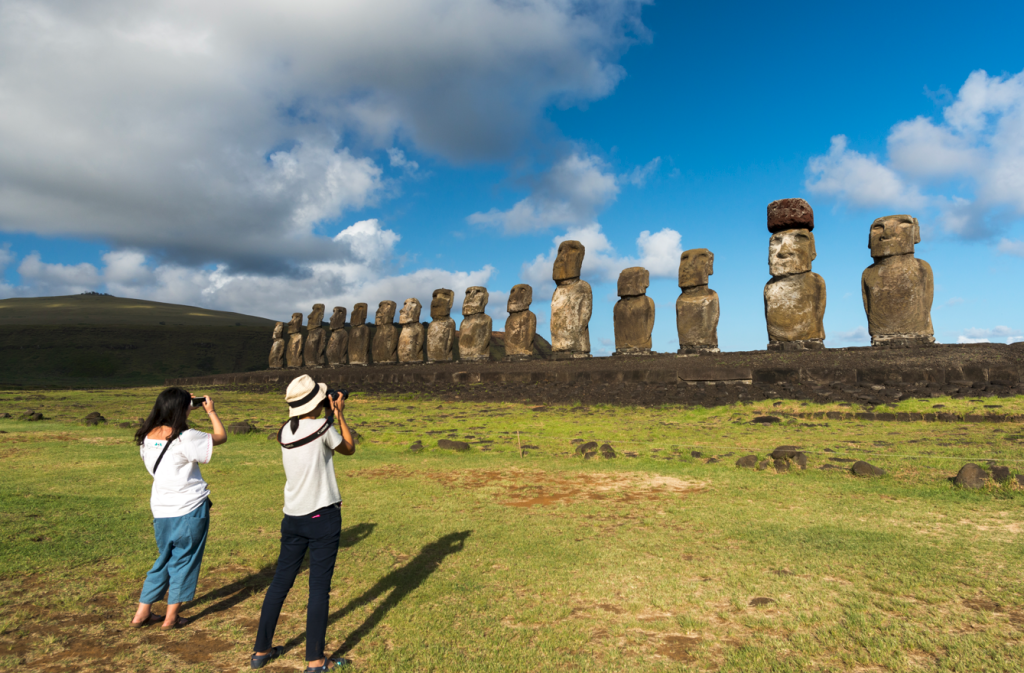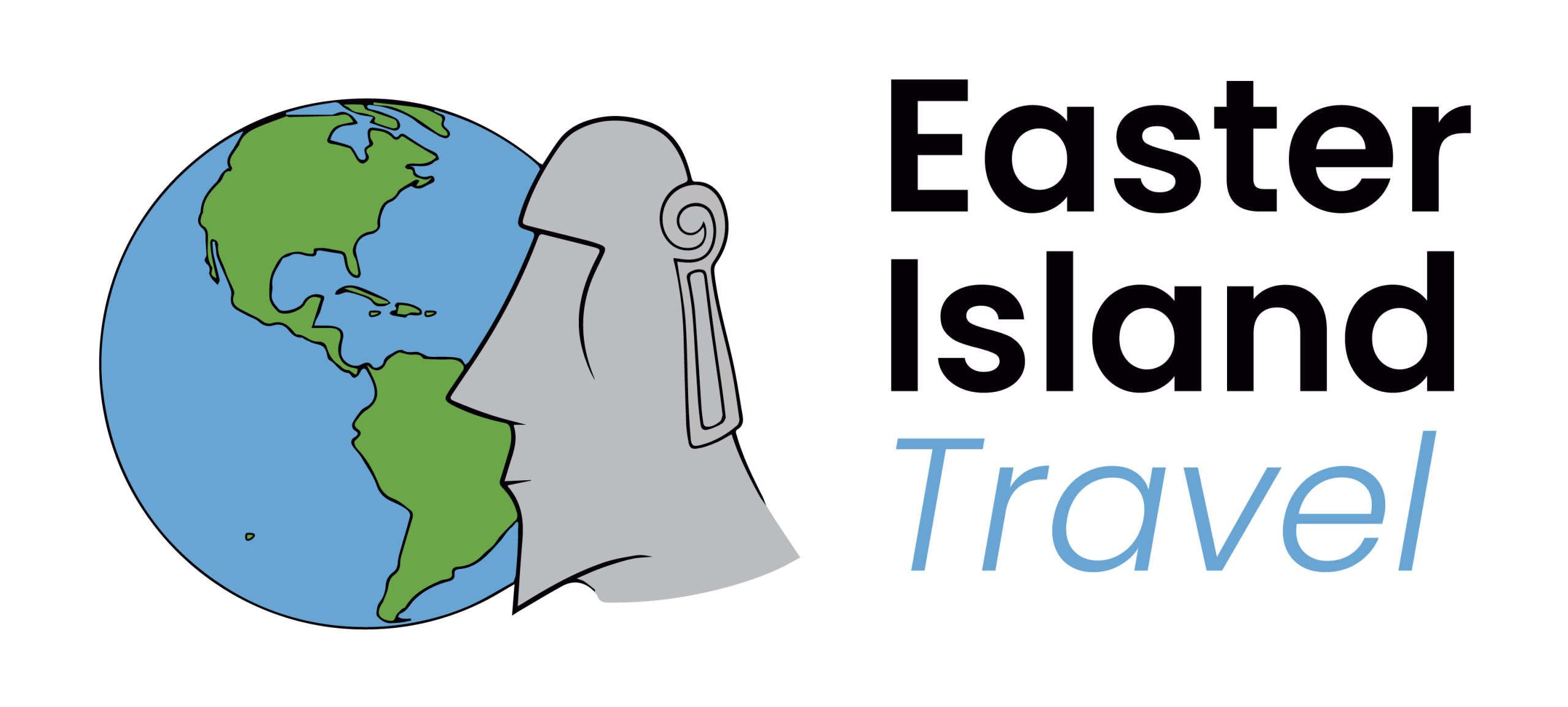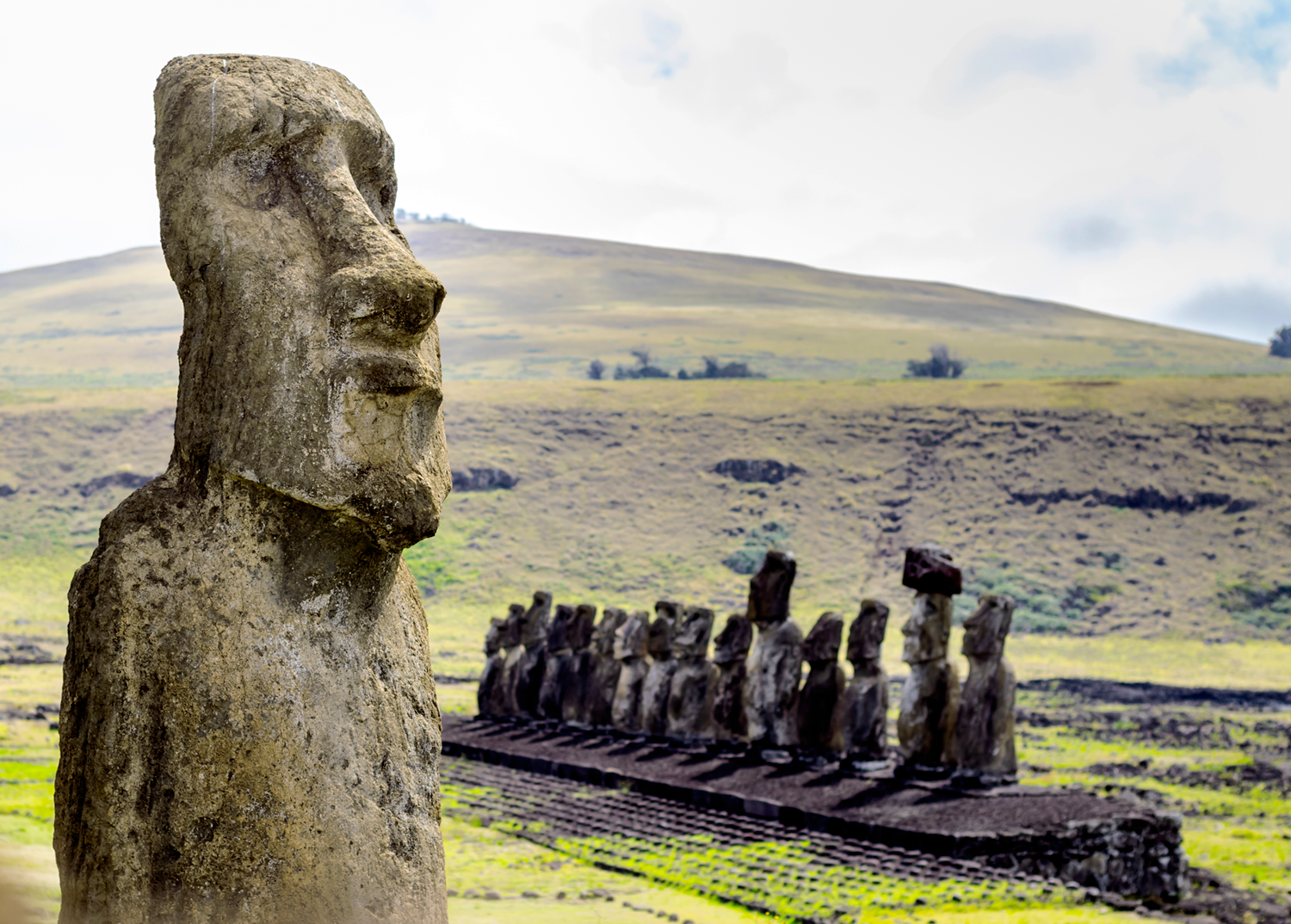
A Cultural and Natural Legacy of Humanity
Rapa Nui National Park, located on Easter Island, Chile, is an archaeological reserve that protects ancient ceremonial villages, petroglyphs, caves with rock paintings, and the iconic stone statues known as moai, created by the island’s original inhabitants between 300 and 1200 AD. Covering approximately 44% of the island, the park was declared a UNESCO World Heritage Site in 1995. For decades, it was managed by the Chilean state through the National Forest Corporation (CONAF).

Managed by the Ma’u Henua Indigenous Community
In August 2016, the Ma’u Henua Indigenous Community was established with the goal of giving the Rapa Nui people full control over their ancestral lands. Recognized as the largest Indigenous organization in Chile, Ma’u Henua officially took over the management of Rapa Nui National Park in March 2018, completing a transfer of authority from the Chilean state.
This administration was born from the roots of the Rapa Nui people, with a vision deeply connected to their land, worldview, and the protection of their cultural and natural heritage.
Since then, Ma’u Henua has been responsible for preserving the island’s heritage through a model based on community-driven and sustainable management. Their work includes trail maintenance, environmental education, archaeological restoration, and the promotion of responsible tourism. Managing a park of this scale is no small feat—and every decision affects both daily life on the island and the experience of its visitors.

Community Participation and Transparent Governance
On May 17, 2025, a key milestone for the park’s future took place: the First Ordinary General Assembly of the Ma’u Henua Indigenous Community. Over 500 people gathered at Lorenzo Baeza Vega School to hear management updates, review proposals, and most importantly, participate in fundamental decisions for Rapa Nui’s future.
The assembly served as a space to evaluate governance, finances, and projects, while encouraging citizen input on the park’s management. Its aim was to increase transparency, strengthen accountability, and promote collective decision-making balancing heritage conservation with tourist access.
One of the main topics was a proposed increase in the ticket price for entering the national park. The community wasn’t just informed of the reasons—such as funding conservation efforts, improving infrastructure and services, and supporting local development—it was also asked to vote. The question was simple: Do you agree with the increase in the ticket price?
The results were as follows:
- 404 people voted in favor
- 130 people voted against
Beyond the numbers, the process itself was meaningful. It was a tangible example of self-determination: the Rapa Nui community taking ownership of a key decision on how to sustainably finance the protection of their heritage.
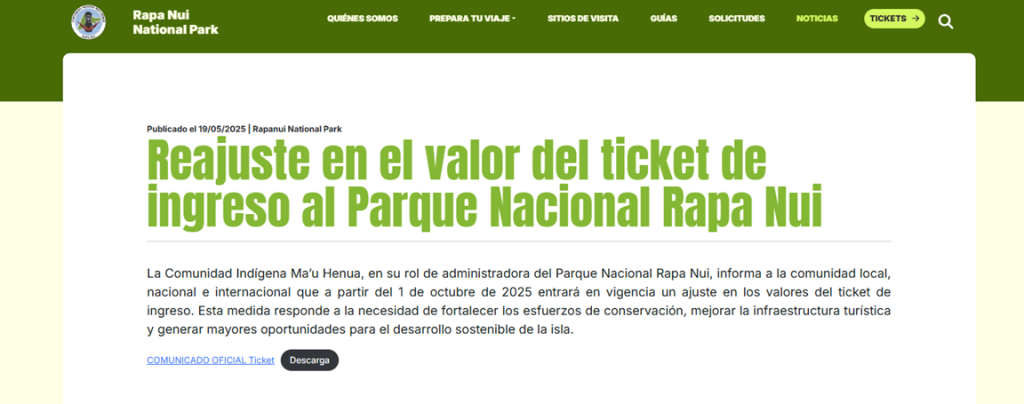
Official Announcement of the New Ticket Prices
On May 19, 2025, the Ma’u Henua Indigenous Community released an official statement confirming that the new ticket prices will take effect on October 1, 2025. The adjustment aims to “strengthen the conservation of archaeological sites, improve infrastructure, enhance tourism services, boost environmental control, and generate greater employment opportunities for the Rapa Nui community.”
The statement also explains that this price update aligns with international standards for heritage site access. Tickets purchased by tour operators before October 1 will remain valid until the pre-printed stock is used.
You can read the full official statement here.

New Rapa Nui National Park Ticket Prices
Below is a comparison of current ticket prices and those that will take effect starting October 1, 2025:
| Category | Current Price (until 09/30/2025) | New Price (from 10/01/2025) |
| Chilean adult tourist | $20,000 CLP | $40,000 CLP |
| Chilean child tourist | $10,000 CLP | $20,000 CLP |
| International adult tourist | $80 USD | $100 USD |
| International child tourist | $40 USD | $40 USD |
The ticket remains valid for 10 consecutive days from the date of issue. It is personal and non-transferable, and allows only one-time entry to specific sites such as Rano Raraku and Orongo.
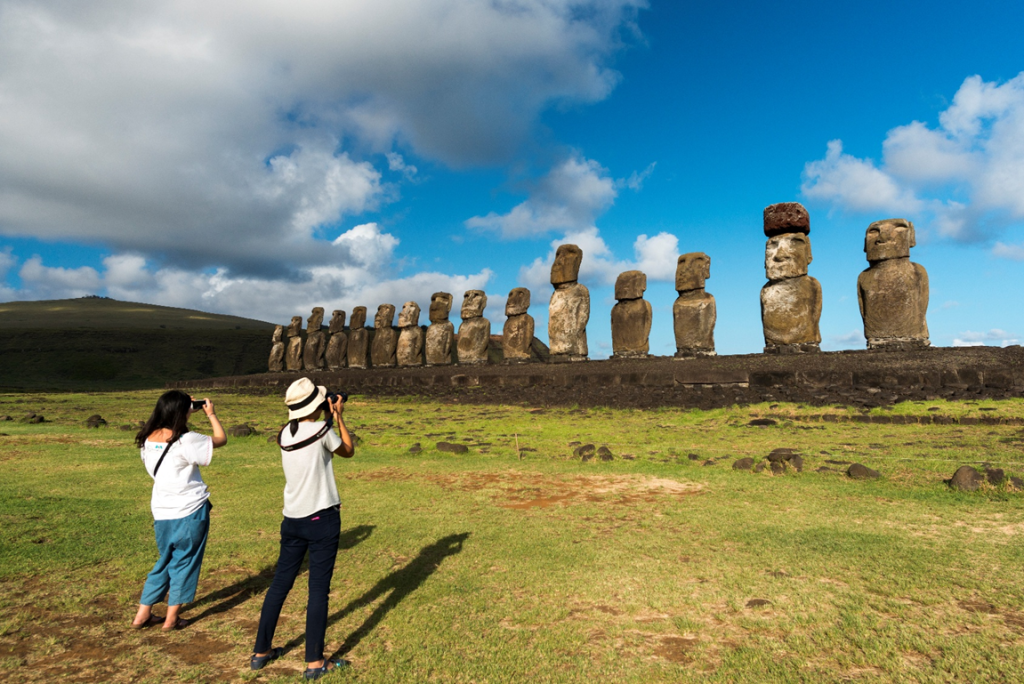
Conclusion
The increase in the ticket price for Rapa Nui National Park stems from a legitimate and transparent process led by the Rapa Nui community itself. Far from being an isolated measure, this adjustment aims to secure the resources needed for heritage conservation, enhance the visitor experience, and support local development—while aligning with international standards for protected site access.
